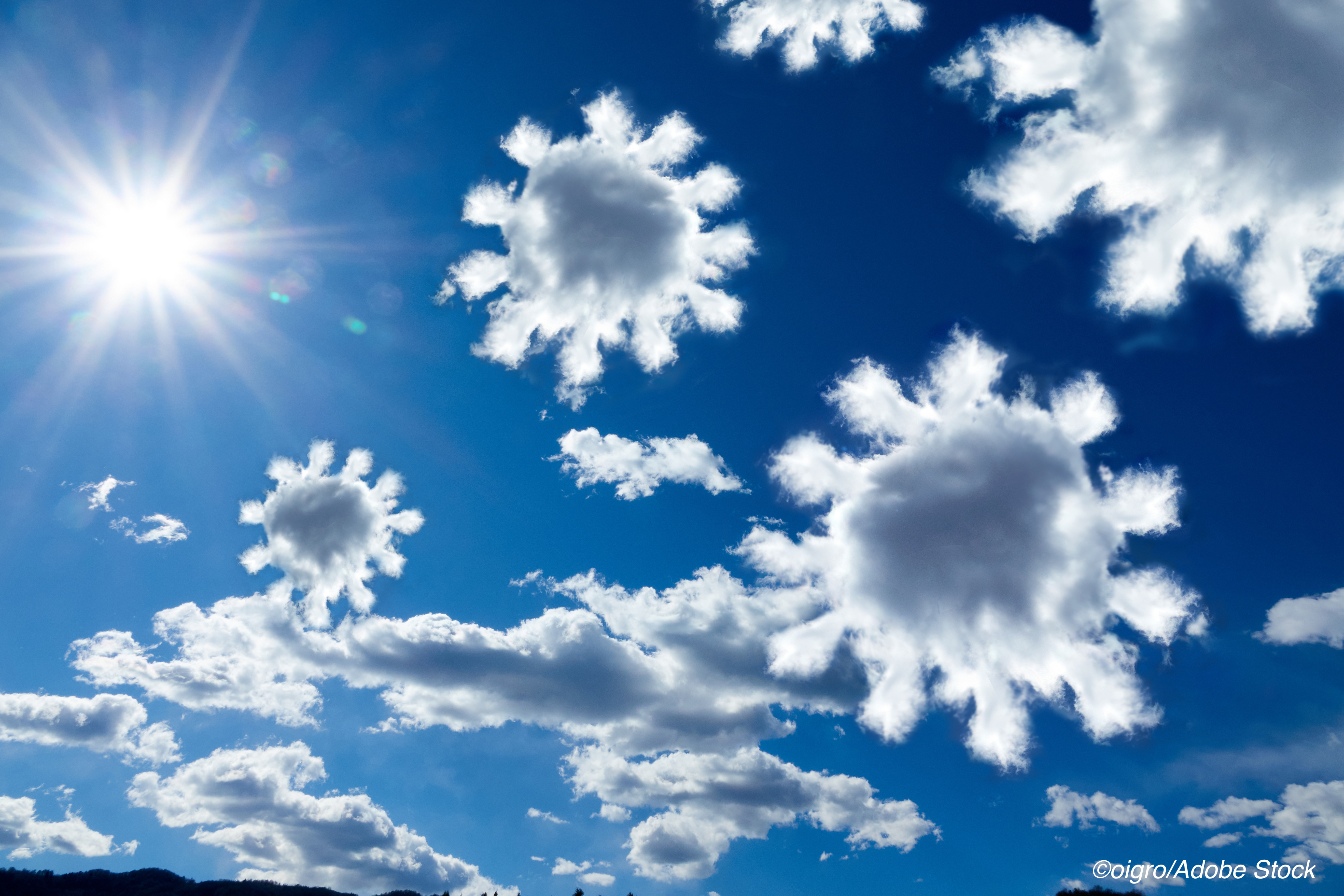Higher ambient ultraviolet A exposure was associated with fewer Covid-19-related deaths in observational analyses from the United States, Britain, and Italy.
The observed effect appeared to be independent of temperature, humidity, socioeconomic status, and whether ultraviolet (UV) intensity was within the vitamin D spectrum and suggests a protective effect for UVA exposure in patients with Covid-19.
“This study is observational and therefore any causal interpretation needs to be taken with caution,” wrote researcher Mark Cherrie, PhD, and colleagues from the University of Edinburgh, United Kingdom, in the British Journal of Dermatology. “However, if the relationship identified proves to be causal, it suggests that optimizing sun exposure may be a possible public health intervention. Given that the effect appears independent of a vitamin D pathway, it suggests possible new Covid-19 therapies and the importance of exploring the role of circulating nitric oxide.”
The researchers noted that seasonality and variation in temperature, humidity, and UV radiation have been shown, in multiple studies, to be associated with infectious disease prevalence.
They had previously described a novel nitric oxide (NO)- driven mechanism independent of vitamin D, by which increased sunlight was associated with lower blood pressure. Their observational studies suggest a link between UV and lower blood pressure and reduced risk for myocardial infarction.
“UV may have a direct effect on the viability of SARS-CoV-2 virus in airborne droplets and on fomites, thus reducing both infection rates, and the size of inoculum in those becoming infected, with correspondingly reduced disease severity and Covid-19 growth rates,” wrote Cherrie and colleagues. “Direct viricidal suppression of SARS-CoV-2 appears to be a UVB effect with UVA wavelengths having no effect on SARS-CoV-2.”
However, they noted that UVA does photo-release nitric oxide (NO) from stores in the skin, where it is mobilized to the systemic circulation and causes vasodilation and reduction in blood pressure, which leads to cardiovascular and metabolic benefits from UV exposure.
“As cardio-metabolic disease and possibly hypertension increase the risk of death from Covid-19, any UV driven improvements in these risk factors would be expected to reduce mortality,” they wrote.
“NO may also have a specific effect on Covid-19. It inhibits replication of SARS-CoV and SARS-CoV-2. In the case of SARS-CoV this occurs by 5-nitrozation and the spike protein, preventing the post translational palmitoylation required for fusion with its cognate angiotensin converting enzyme 2 receptor (ACE2R). This spike protein of SARS-CoV is highly homologous to that of SARS-CoV-2.”
Cherrie and colleagues used an ecological regression approach to model Covid-19 deaths in small areas (counties) across the contiguous US during the early months of the Covid-19 pandemic (January to April 2020).
The primary analysis was for counties in the United States (n=2,474), with replication studies for Covid-19 deaths across Britain (6,724 areas) and Italy (6,775 areas). Daily mean UVA (January-April 2020) varied between 450-1,000 KJ/m2 across the three countries, with lower average levels experienced across England (340 to 460 K (SD=83). For England, the average UVA level between January and mid-April was 412 KJ/m2 (SD=18), and for Italy, 717 KJ/m2 (SD=52).
Adjusting for other measured confounders and infection rates at a higher level of geography, the analysis suggested reductions in mortality risk ratio (MRR) of 0.71 in the U.S. per 100 increase in UVA (KJ/m2).
Similar effect sizes were seen in the two replication studies, with an MRR in Italy of 0.81 and in England, 0.49. For the random effects meta-analysis across all three countries, modeling showed a pooled MRR estimate of 0.68 per 100 increase in UVA (KJ/m2).
Further, the model predicted that mortality (death per million population) would fall by one-third to one-half in all three countries based on UVA levels.
“This despite the very different levels of death being experienced between the countries at this point in the epidemic,” the researchers noted.
The models also found that the size of the risk reduction per 100 (KJ/m2) UVA was largest for England, which has the lowest average level of UVA during the period.
“Our models are consistent with a situation where UVA exposure may be an additional UV protective factor against Covid-19, along with other potential UV related pathways through vitamin D production and direct viricidal suppression,” the researchers wrote.
“Given that UVA does not appear to directly act in viricidal suppression of SARS-CoV-2, the reduction in the observed risk might be the result of either behavioral change or a biological pathway. Warm and sunny days might increase the chance of time spent outdoors or away from indoor spaces where close contact with others would be higher. Although UVA and air temperature are associated, in our models we also control for temperature.”
-
Higher ambient ultraviolet A exposure was associated with fewer Covid-19-related deaths in observational analyses from the United States, Britain, and Italy.
-
The observed effect appeared to be independent of temperature, humidity, socioeconomic status, and whether ultraviolet (UV) intensity was within the vitamin D spectrum and suggests a protective effect for UVA exposure in patients with Covid-19.
Salynn Boyles, Contributing Writer, BreakingMED™
Cherrie is suppored by Health Data Research UK.
Cat ID: 190
Topic ID: 79,190,730,933,190,520,926,192,927,925,934



